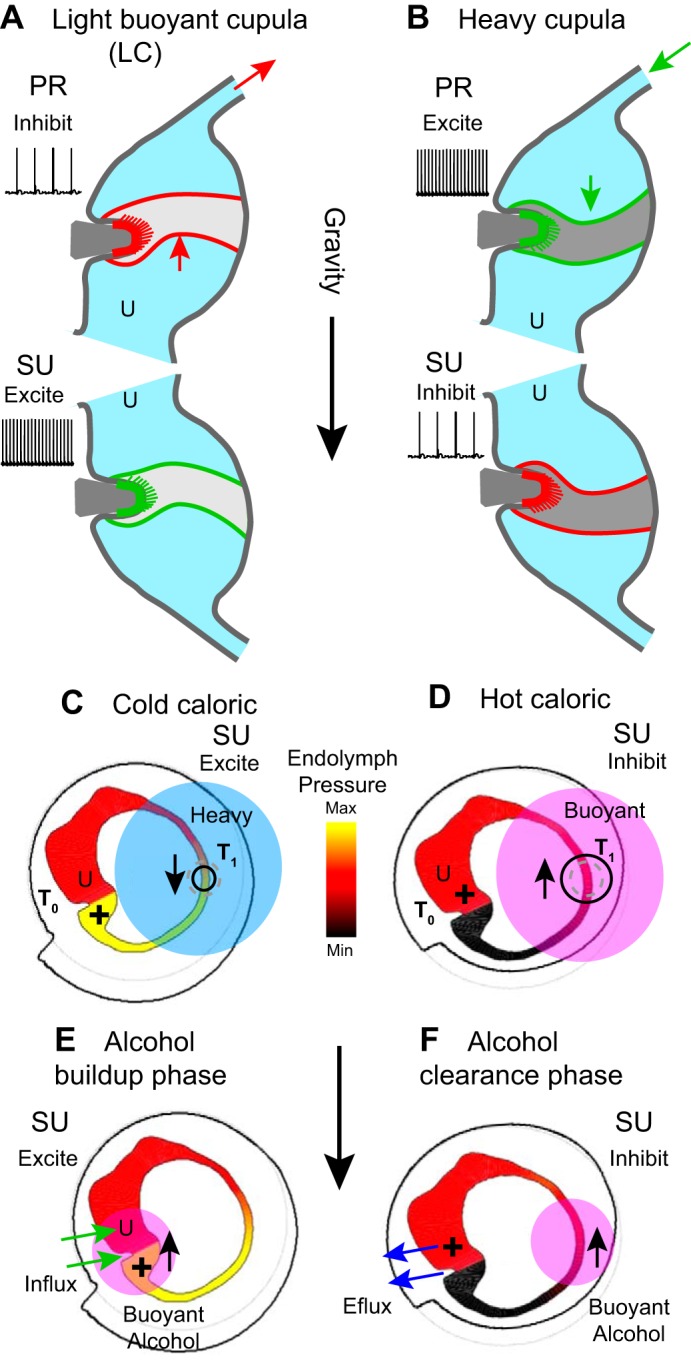Fig. 6.

Light cupula, heavy cupula, caloric, and alcohol buoyancy. A: under pathological conditions the specific gravity of the cupula can be abnormally low (light cupula) causing it to be buoyant and deflect up when oriented relative to gravity. Light cupula evokes a sustained decrease in lateral canal (LC) afferent nerve discharge rate in the prone (PR) position and a sustained increase in discharge rate when in the supine (SU) position. B: heavy cupula evokes the opposite neural responses. C: cooling the long slender limb of the lateral canal by cold irrigation of the ear canal increases the specific gravity of a section of endolymph, thus generating a sustained pressure (+) across the cupula and sustained afferent nerve responses similar to light or heavy cupula. D: hot caloric irrigation evokes the opposite mechanical responses. E: diffusion of alcohol into the endolymph from the blood can also generate gravity-dependent responses through buoyancy. Influx of alcohol from capillaries in the end organs causes a buildup of alcohol concentration lowering the specific gravity of the cupula and endolymph near the organs. This renders the canals sensitive to gravity, very similar to light cupula. F: during alcohol clearance, the endolymph density near the sensory organs temporarily decreases relative to the slender duct, thus reversing the direction of the net buoyancy force.
